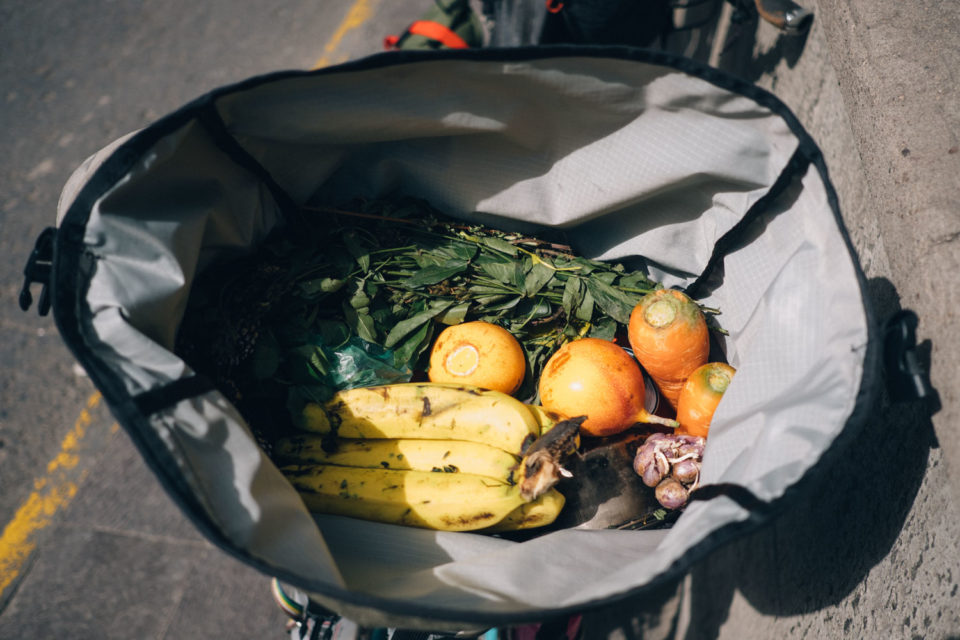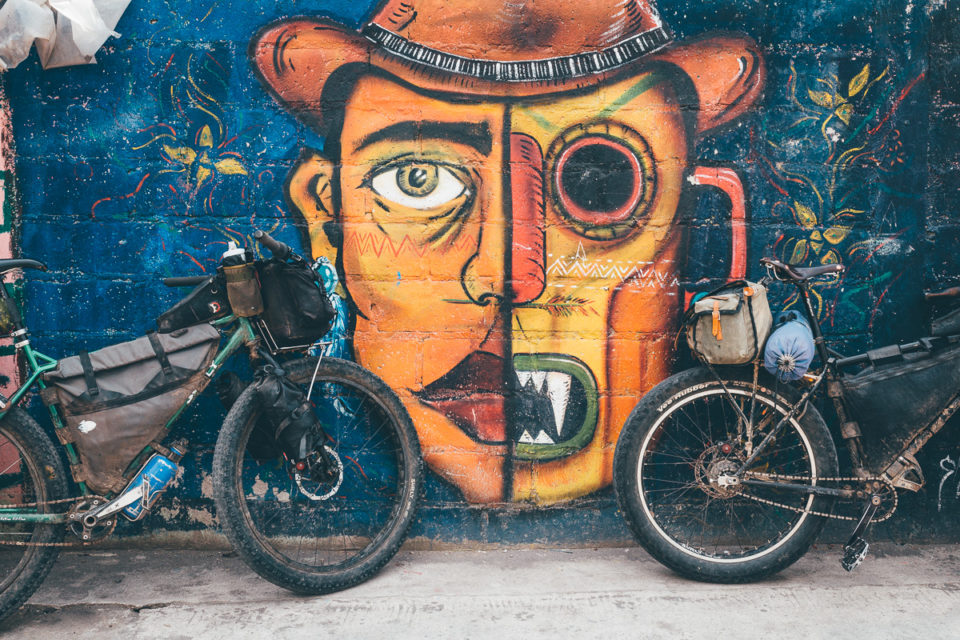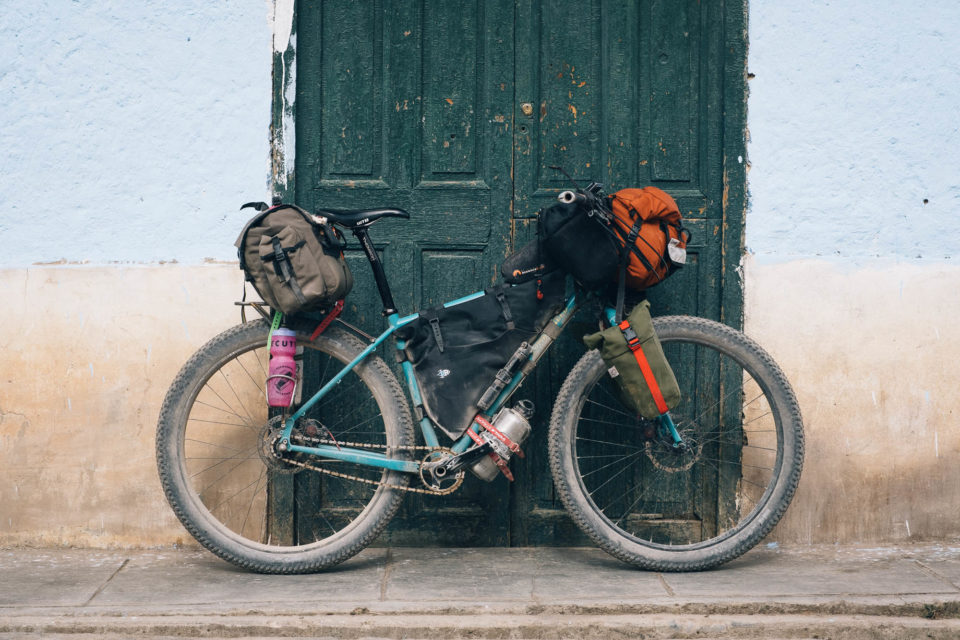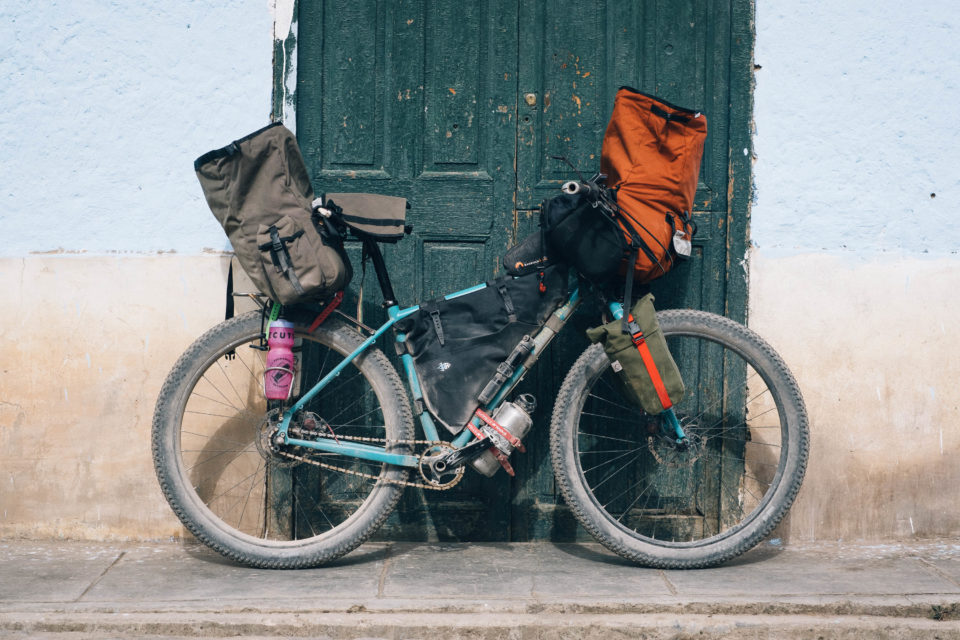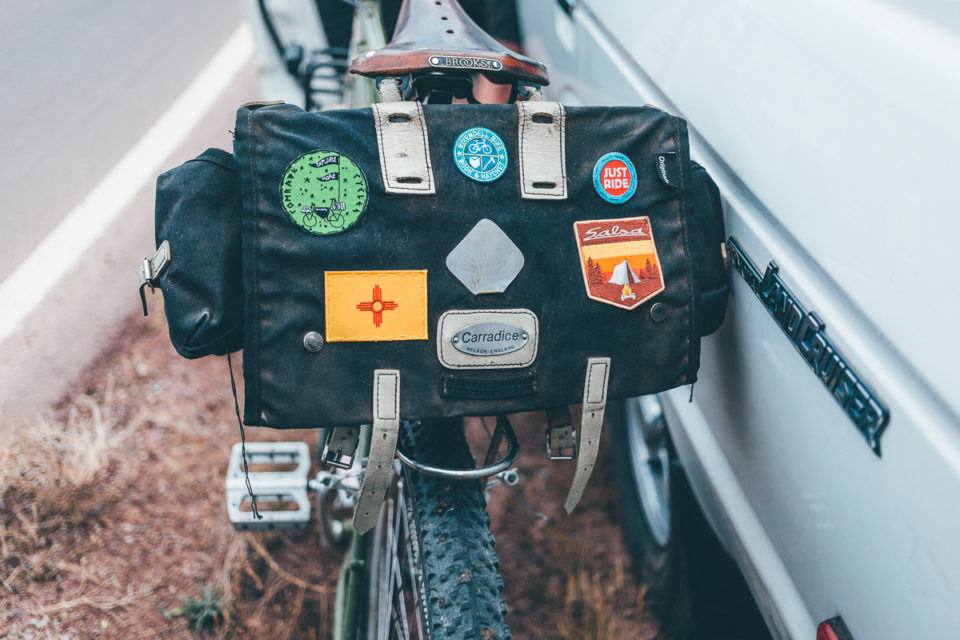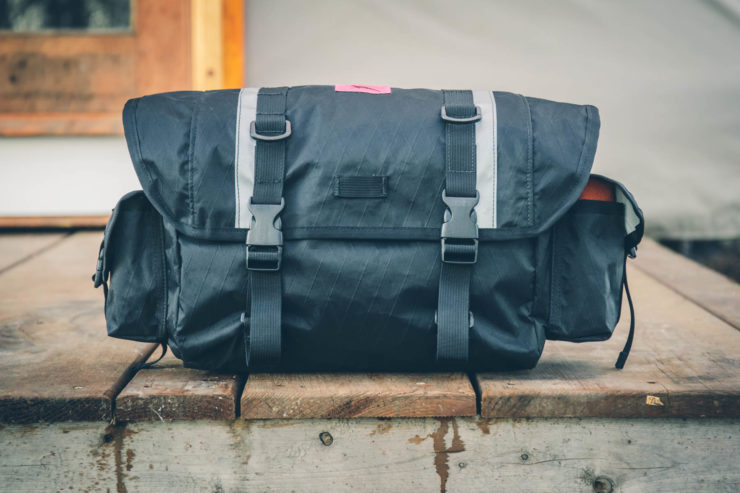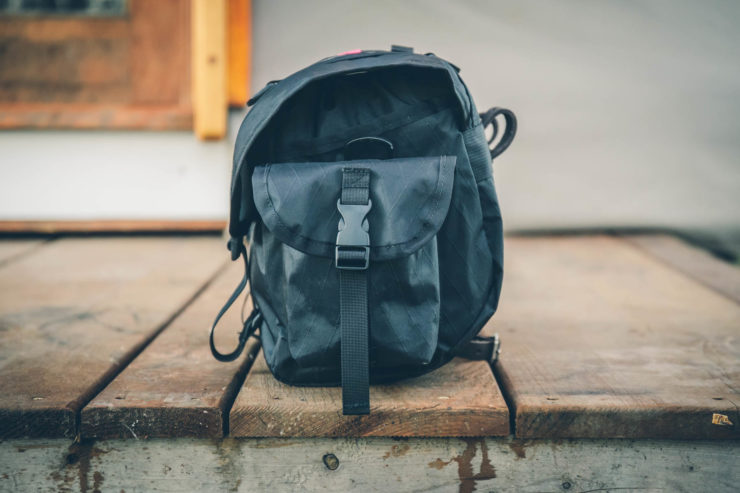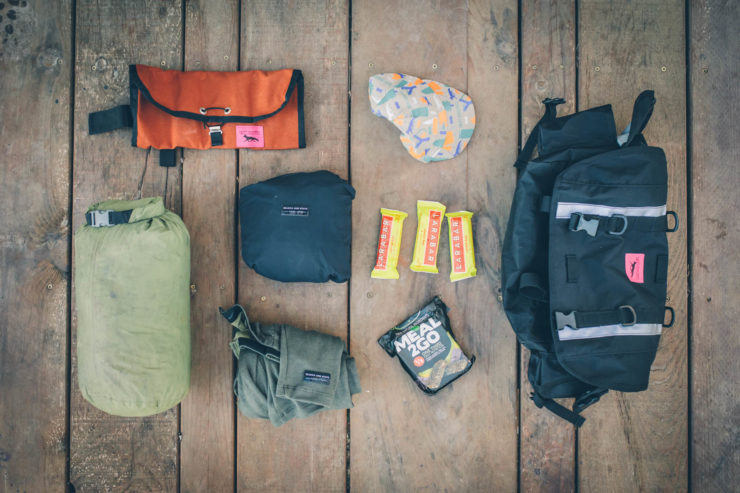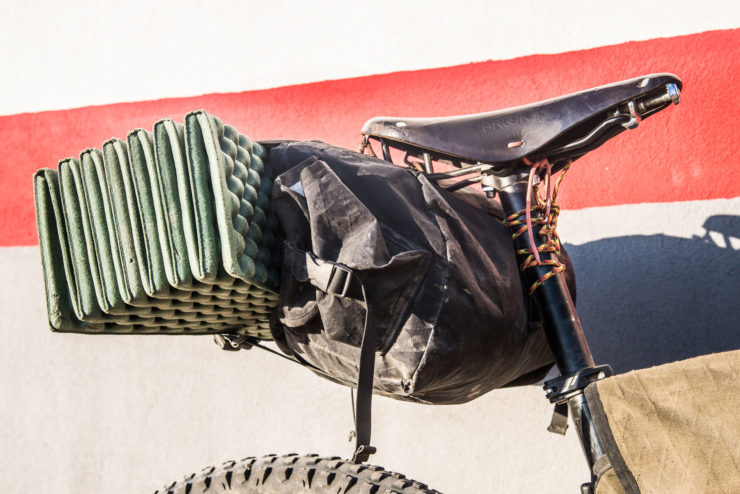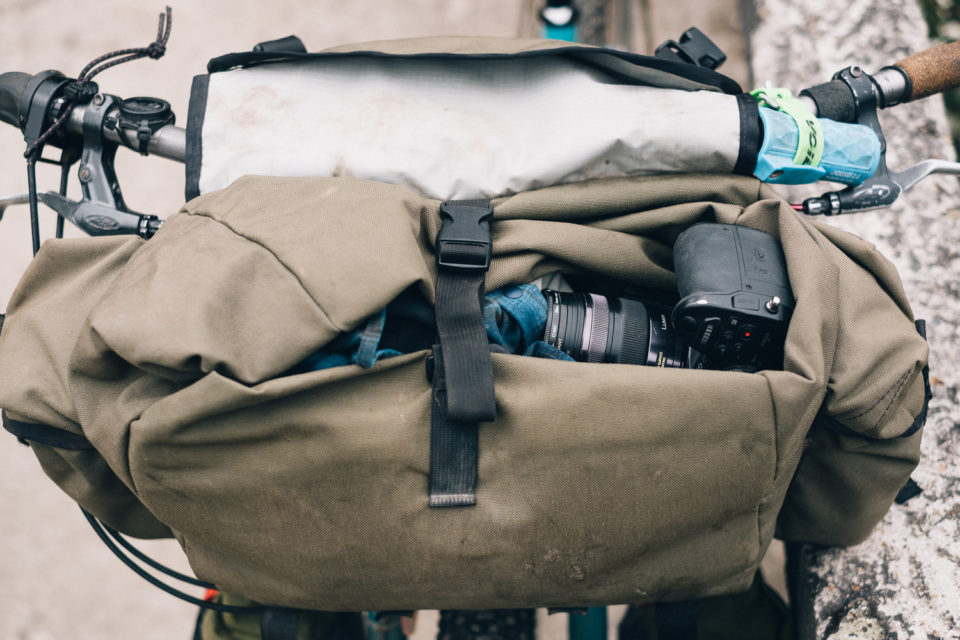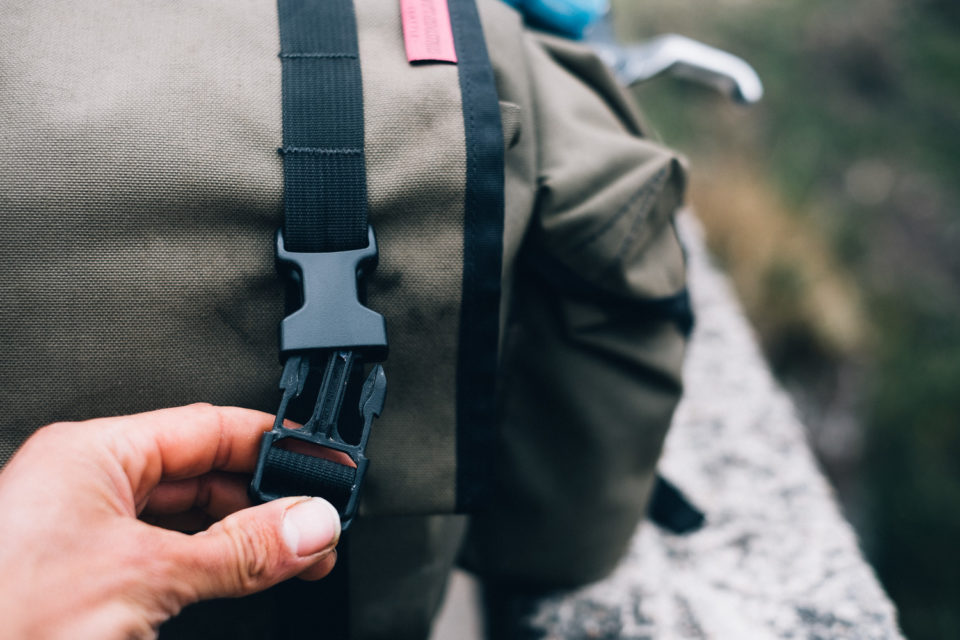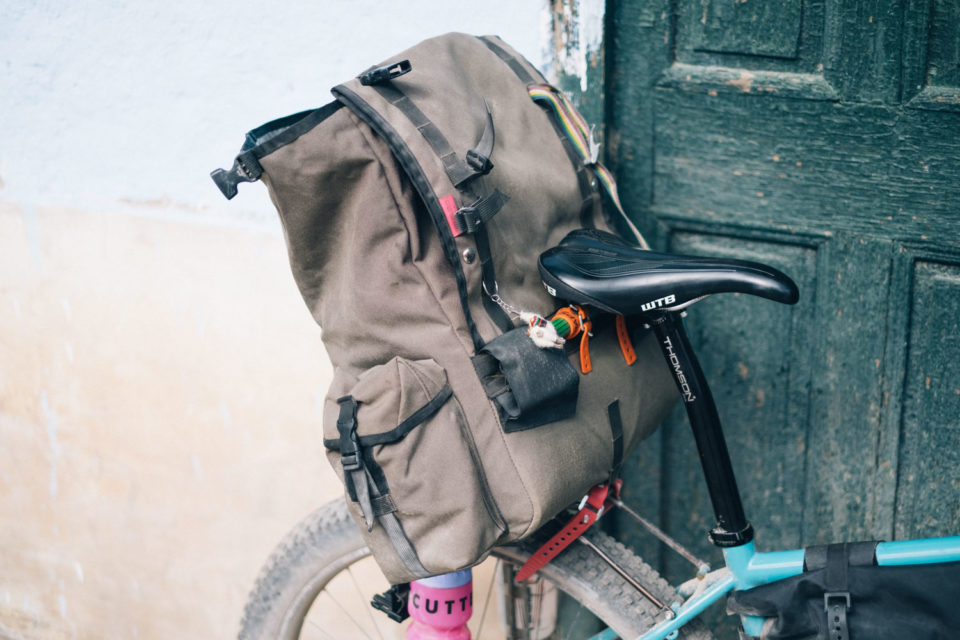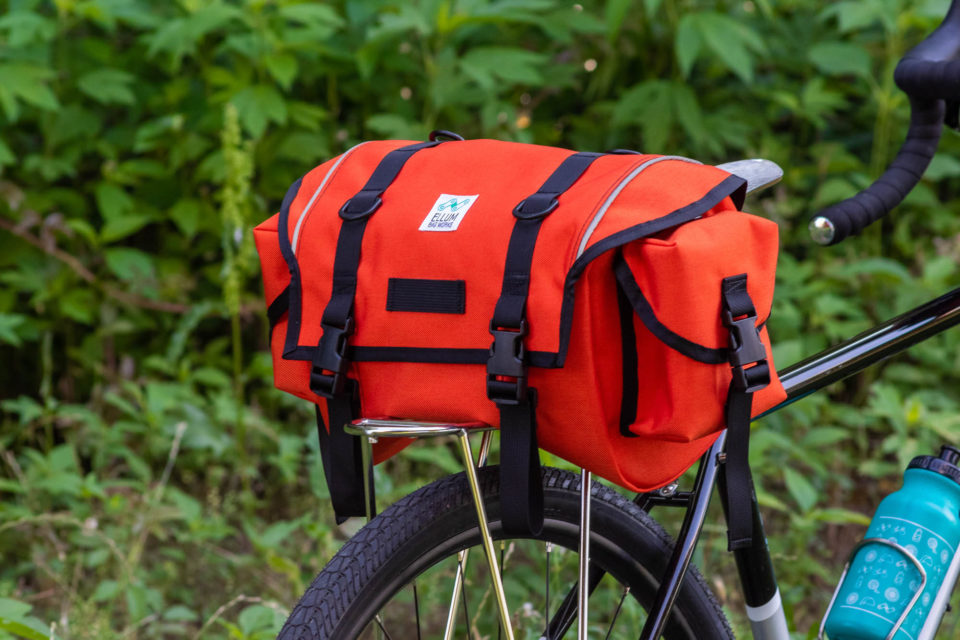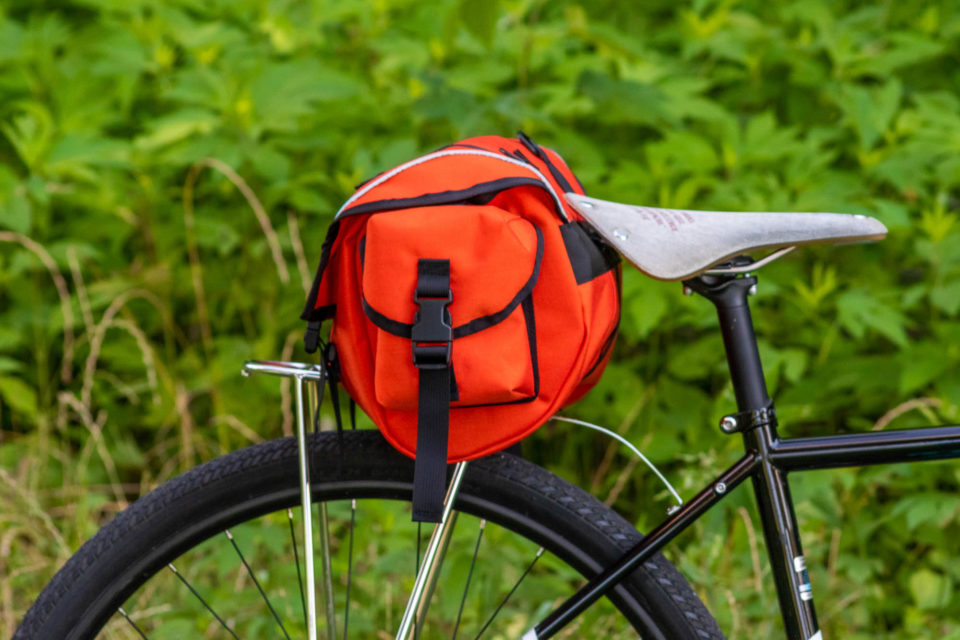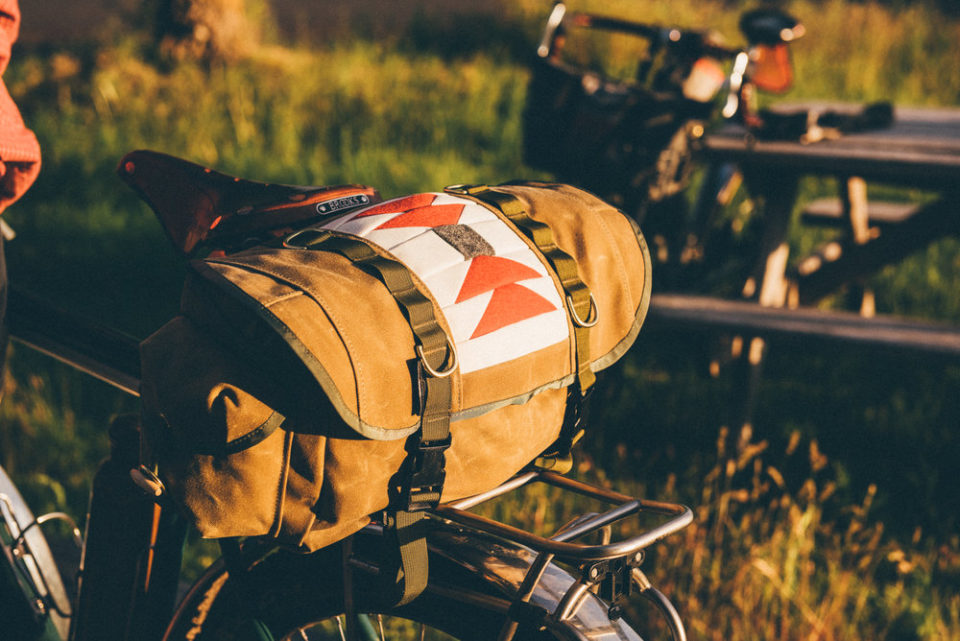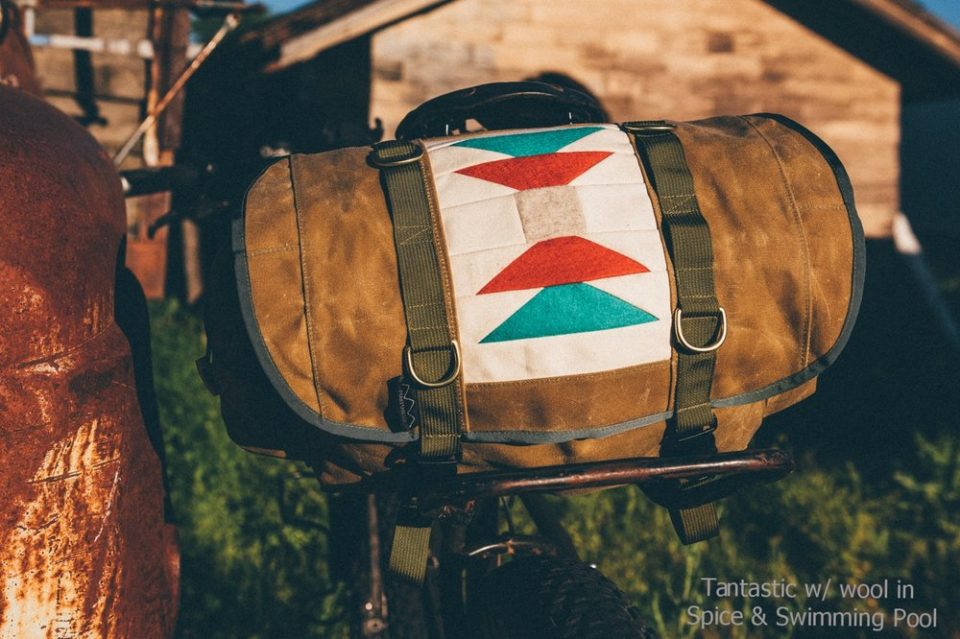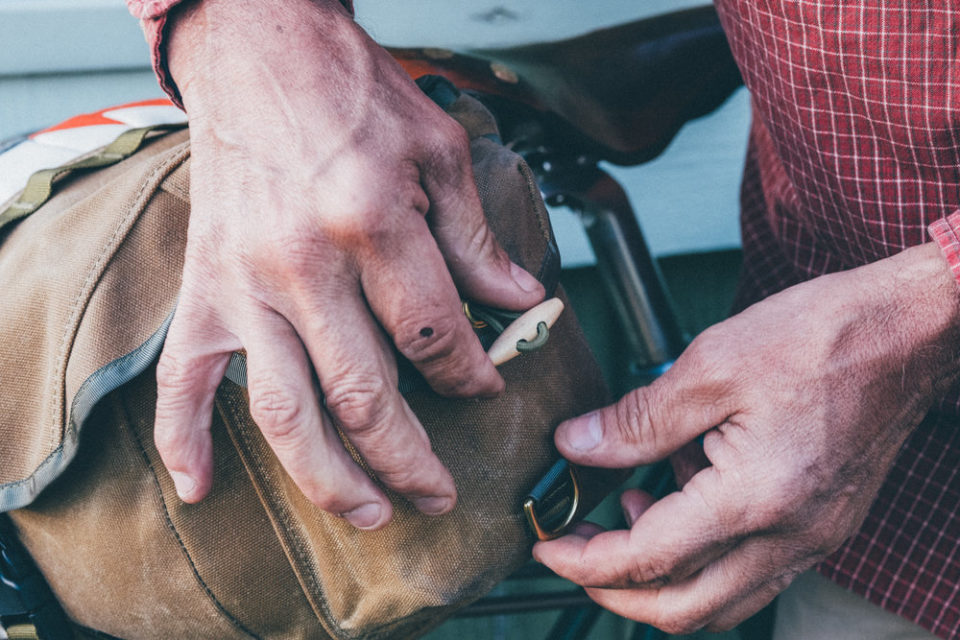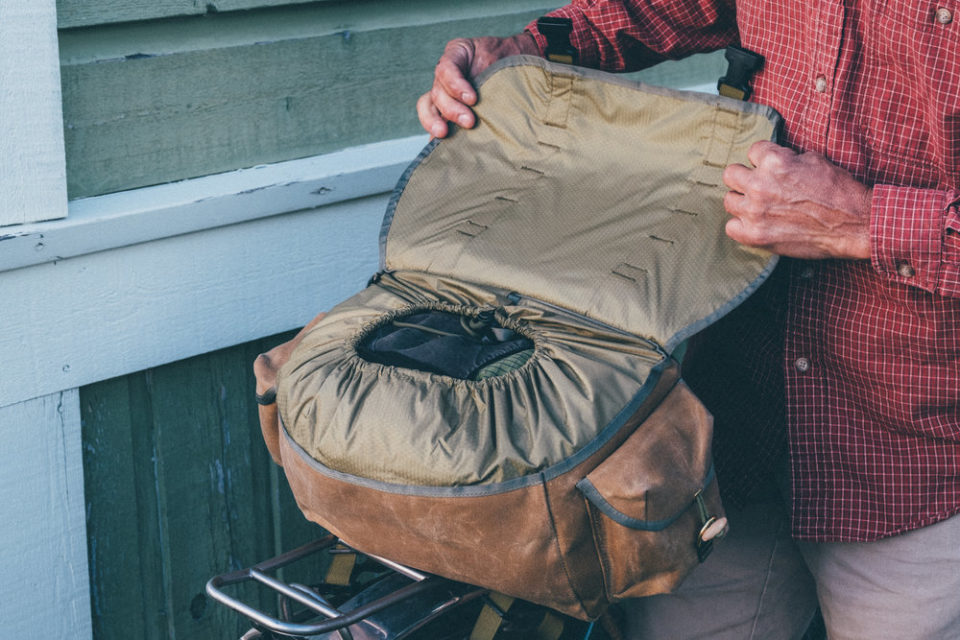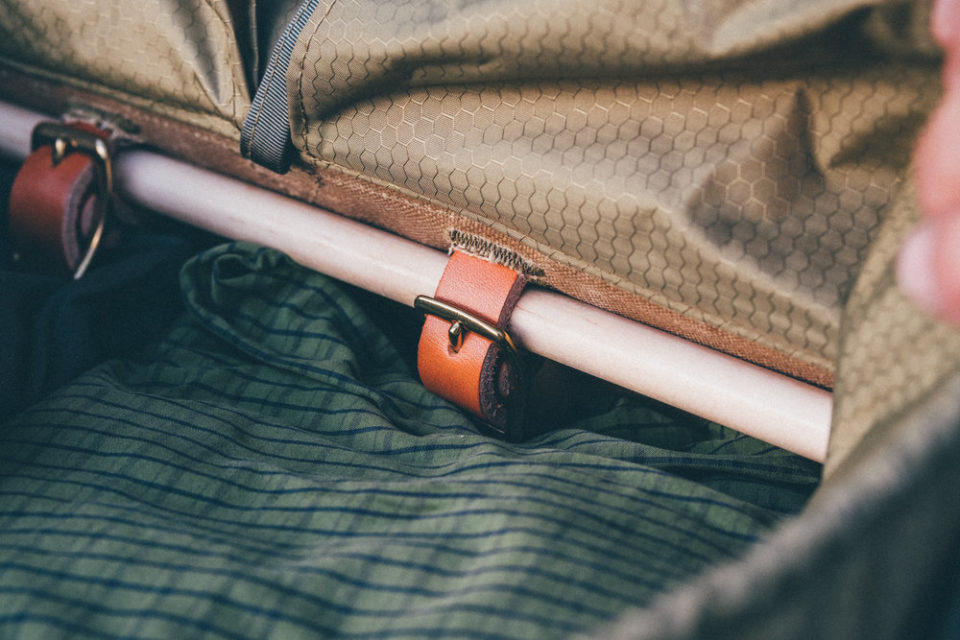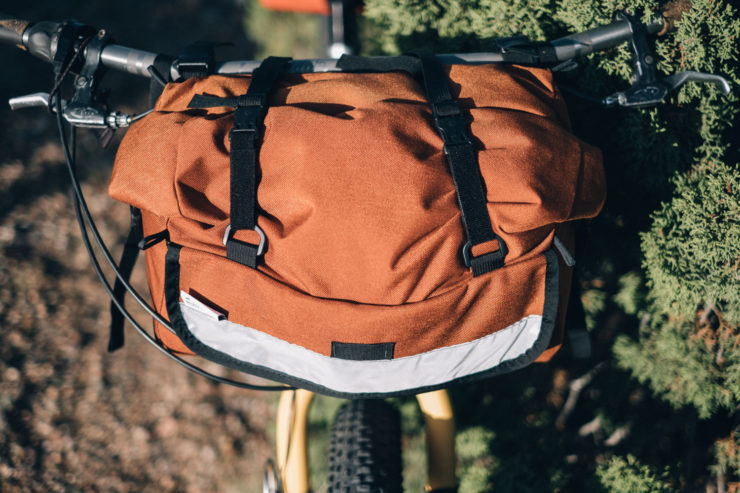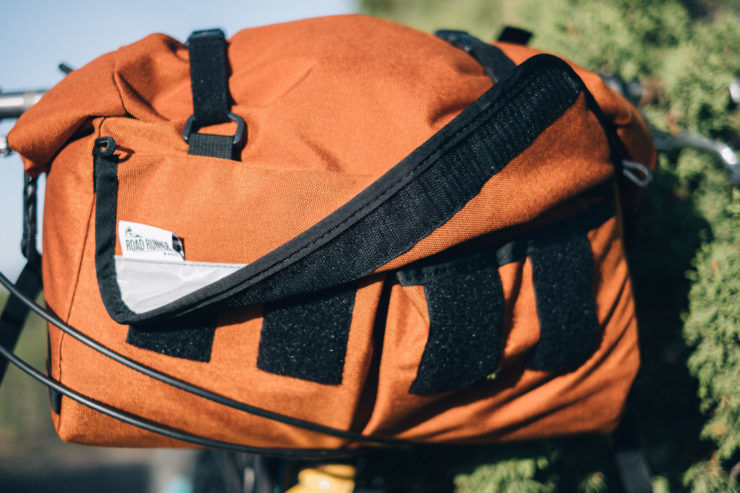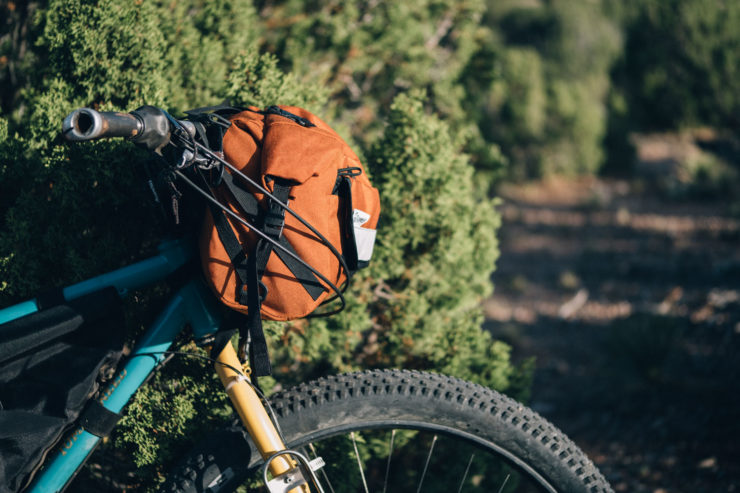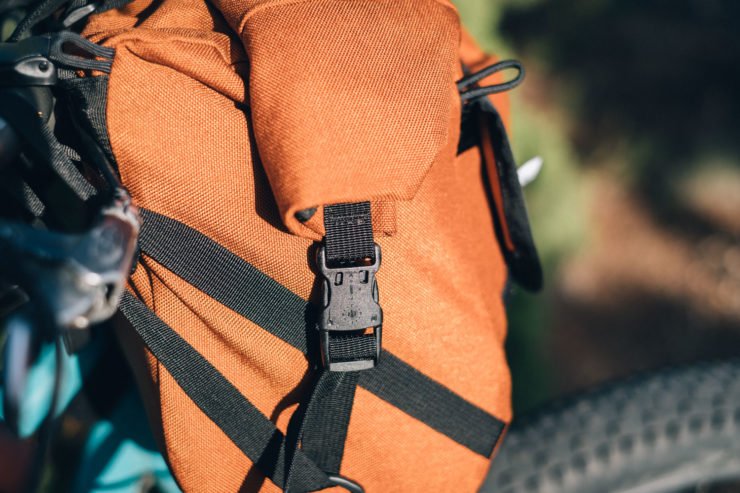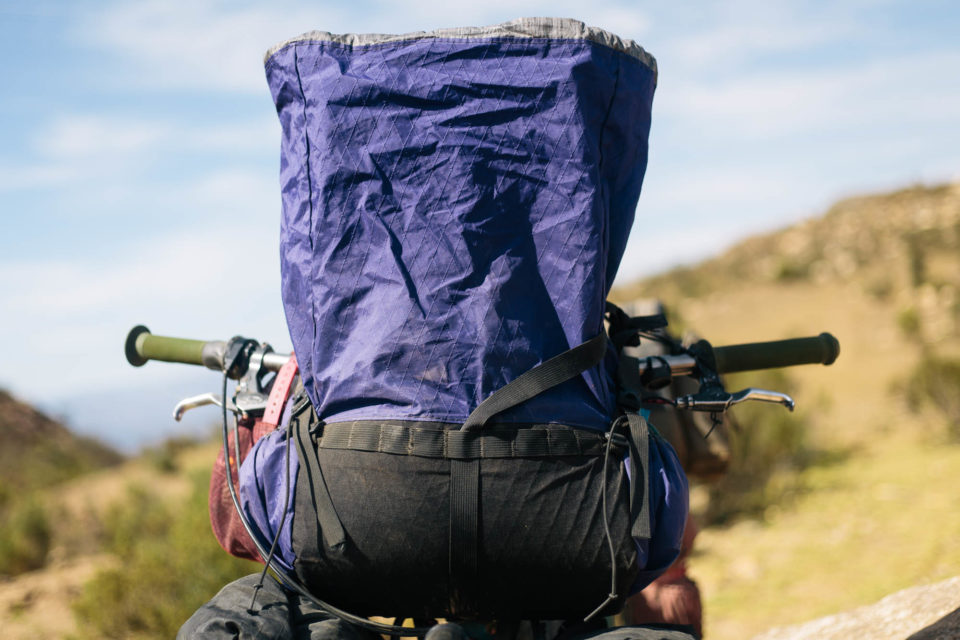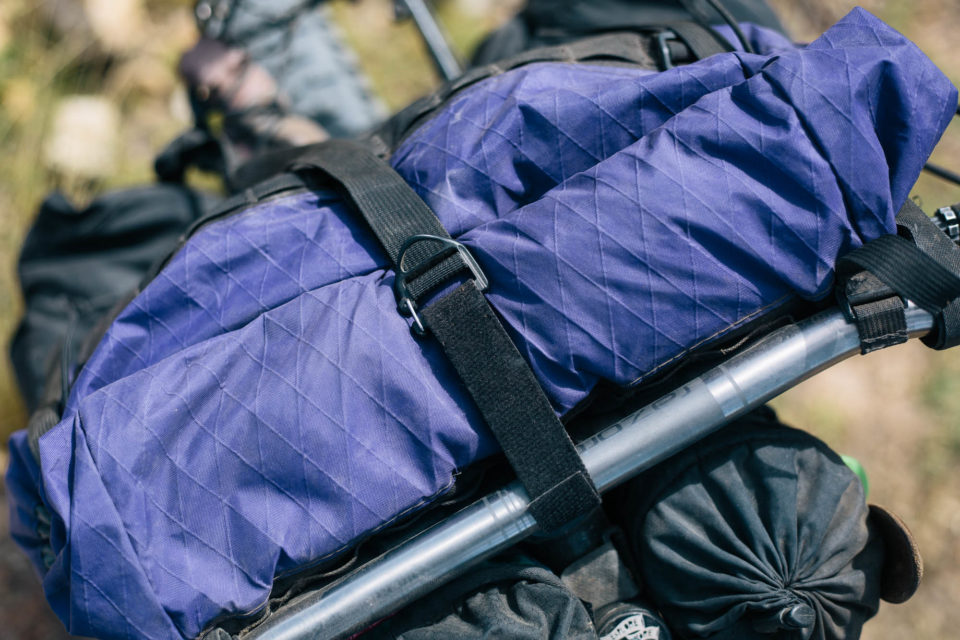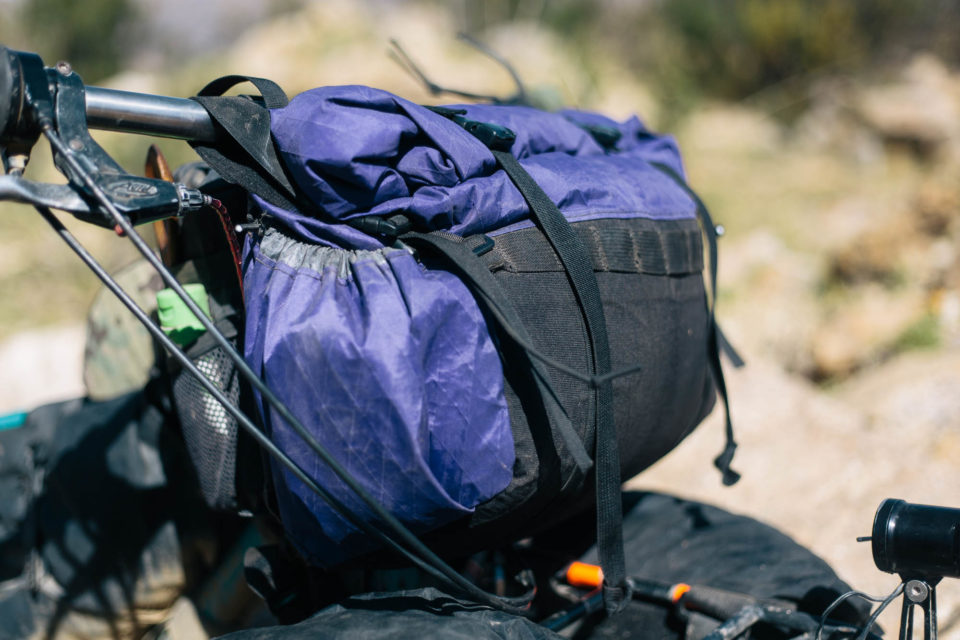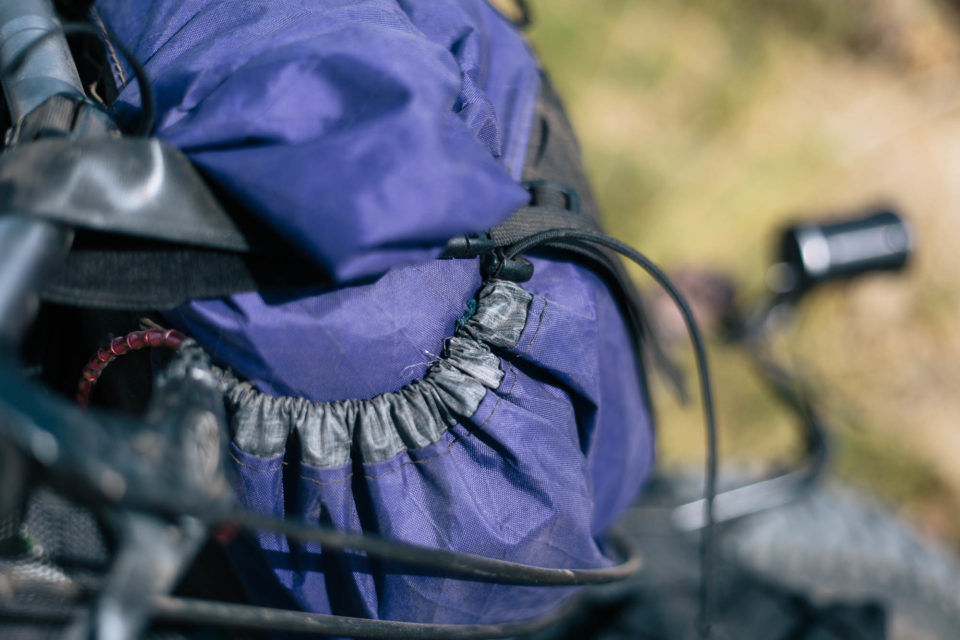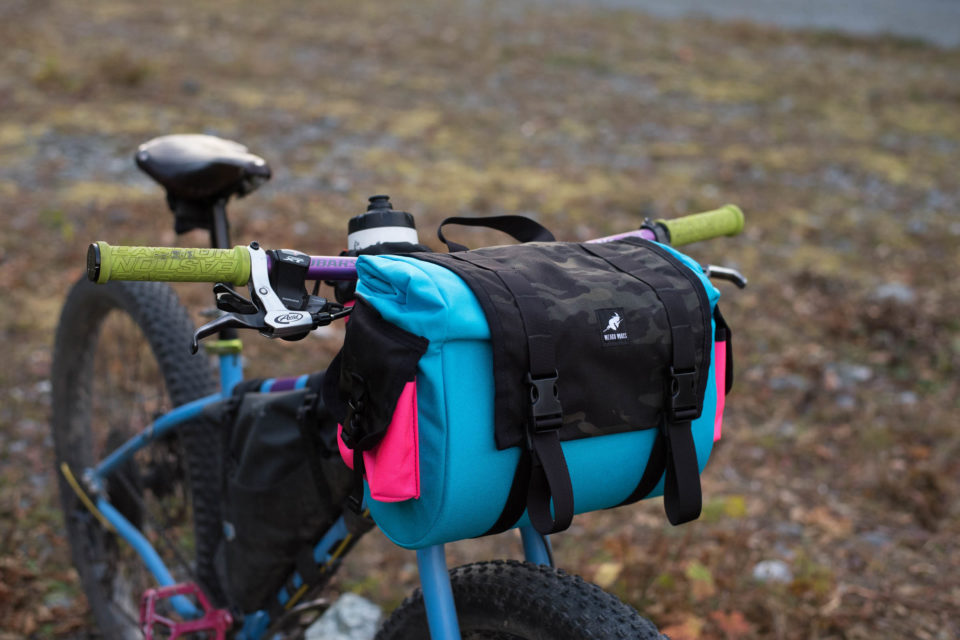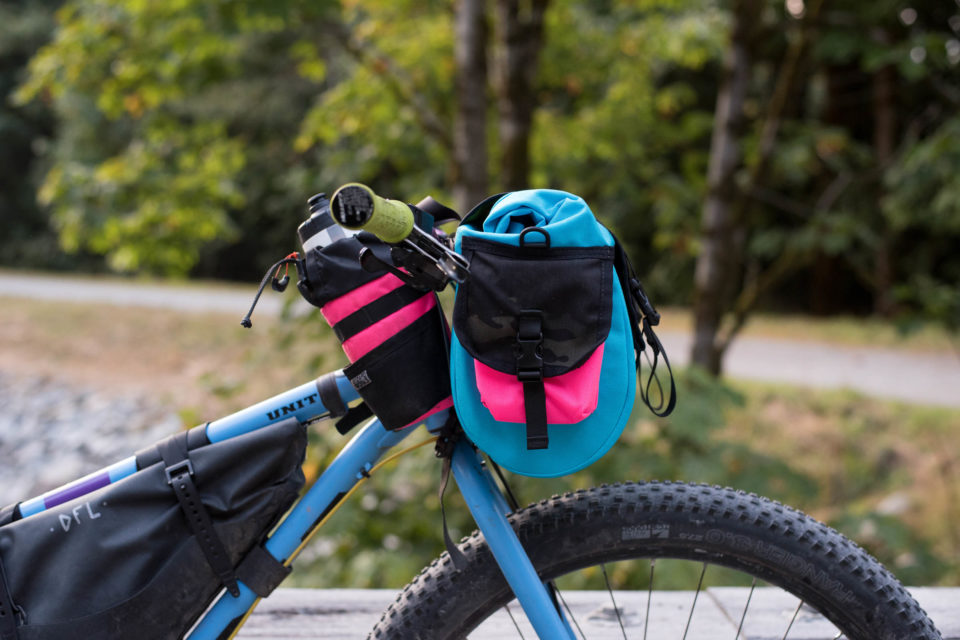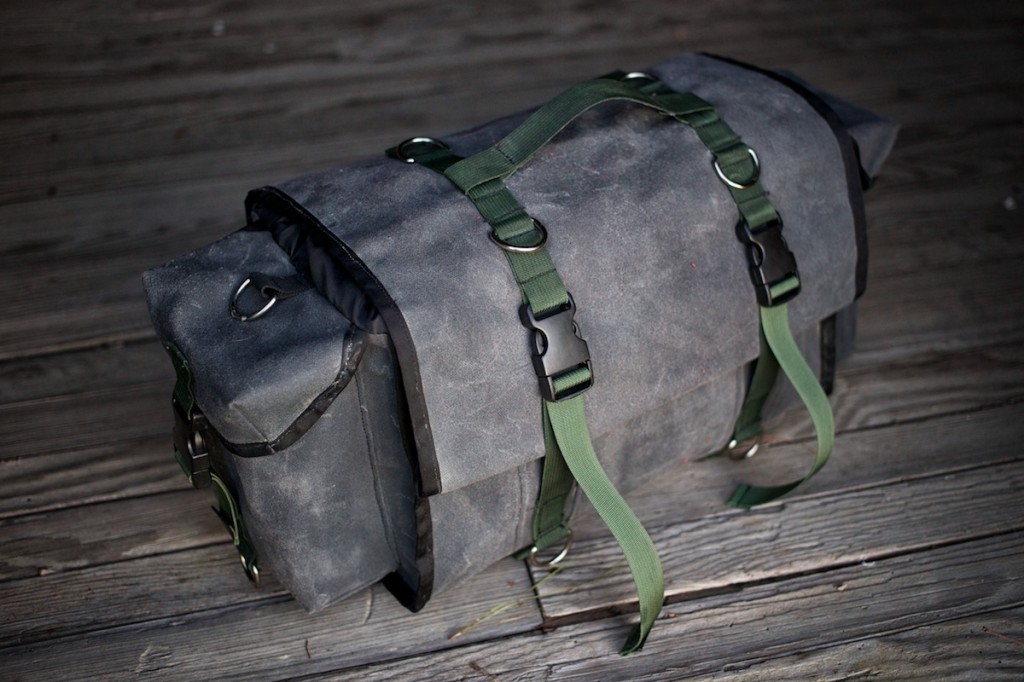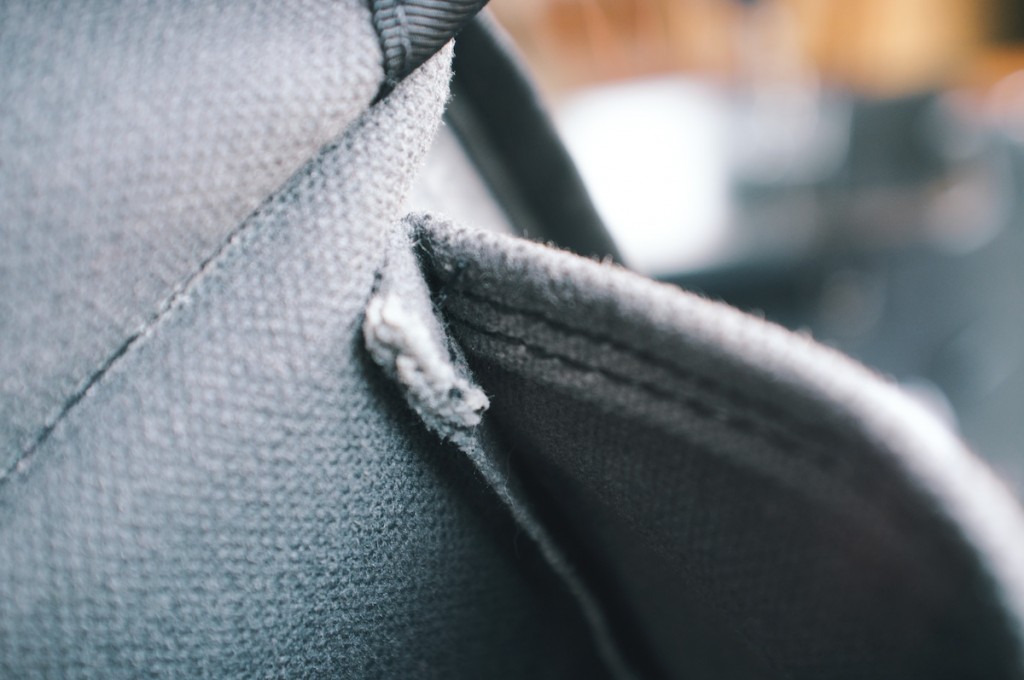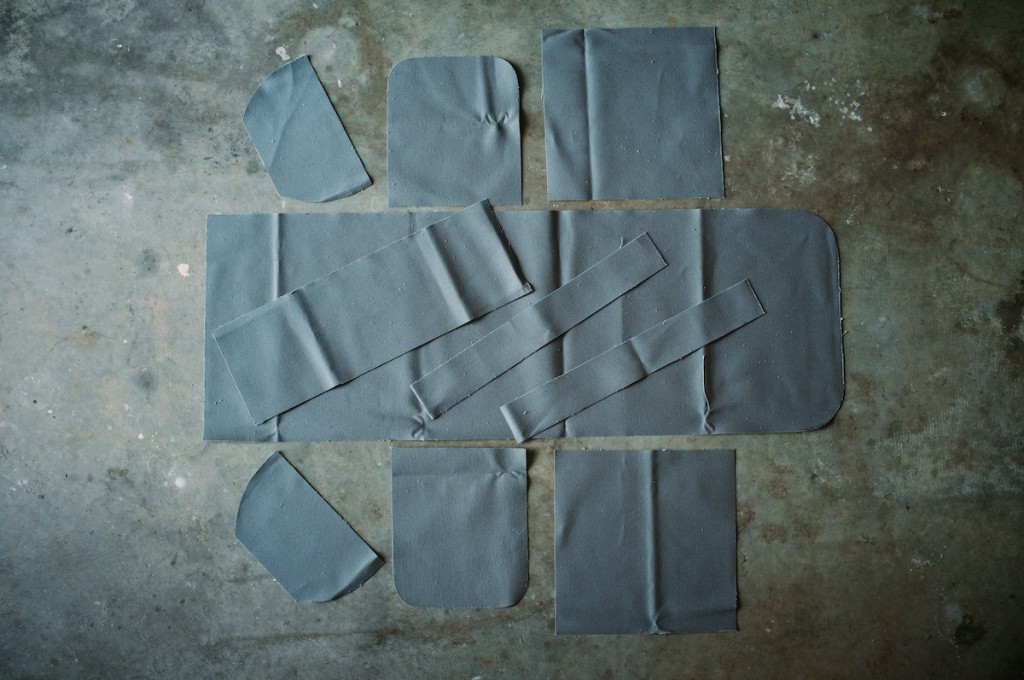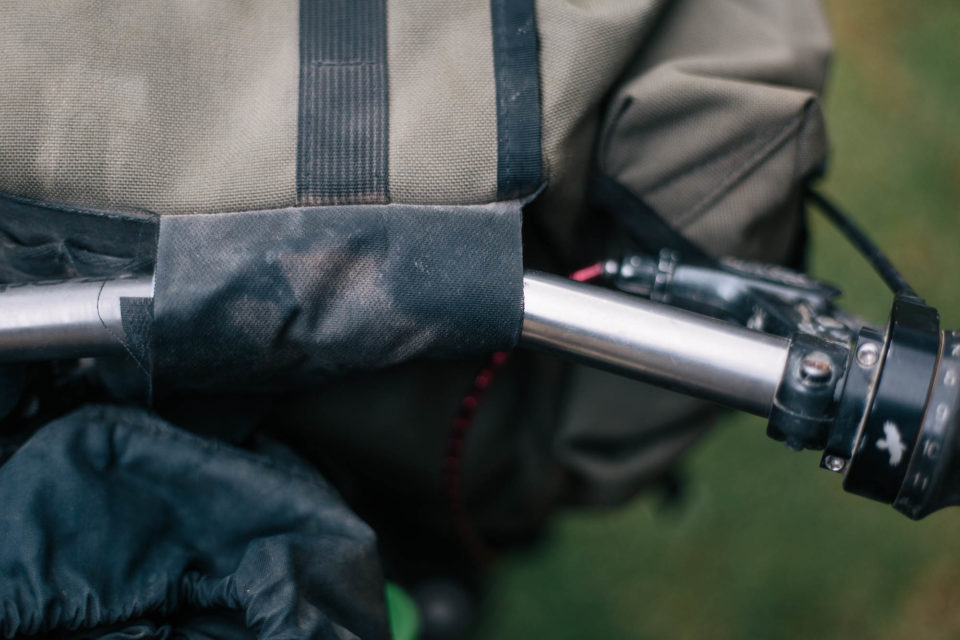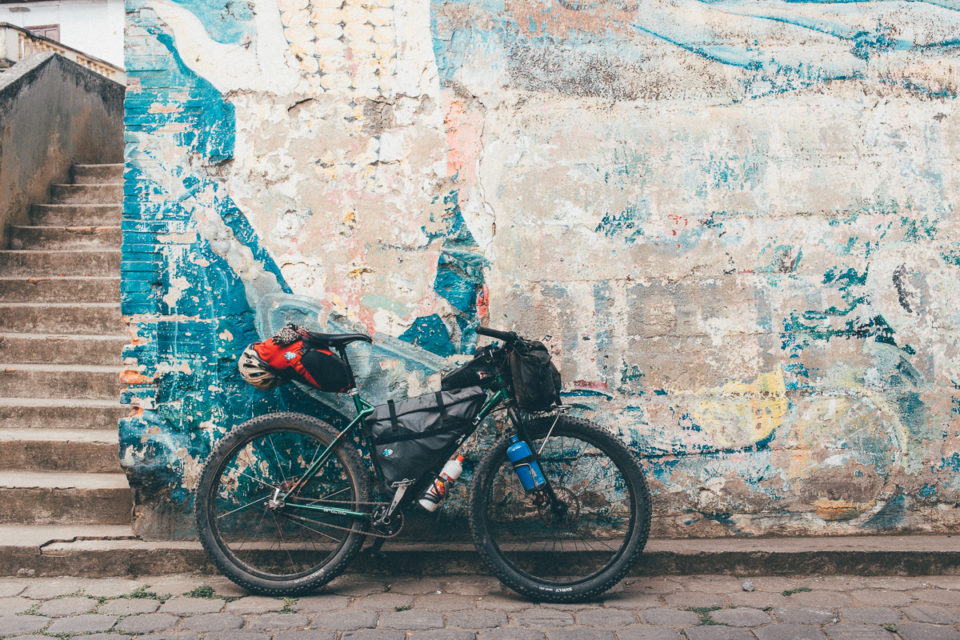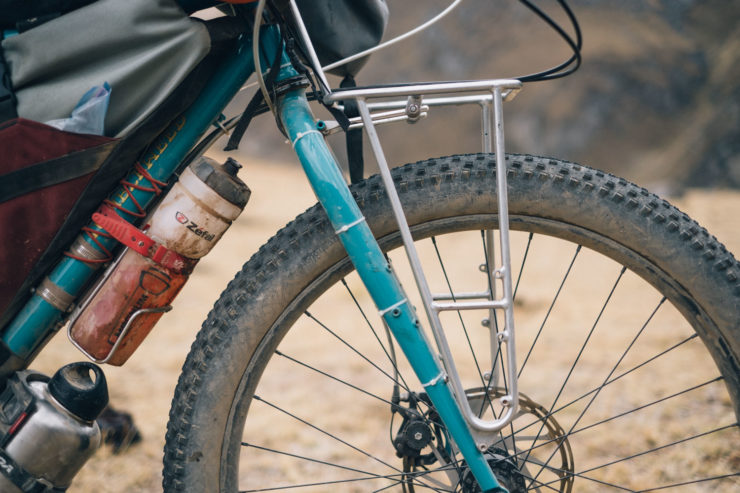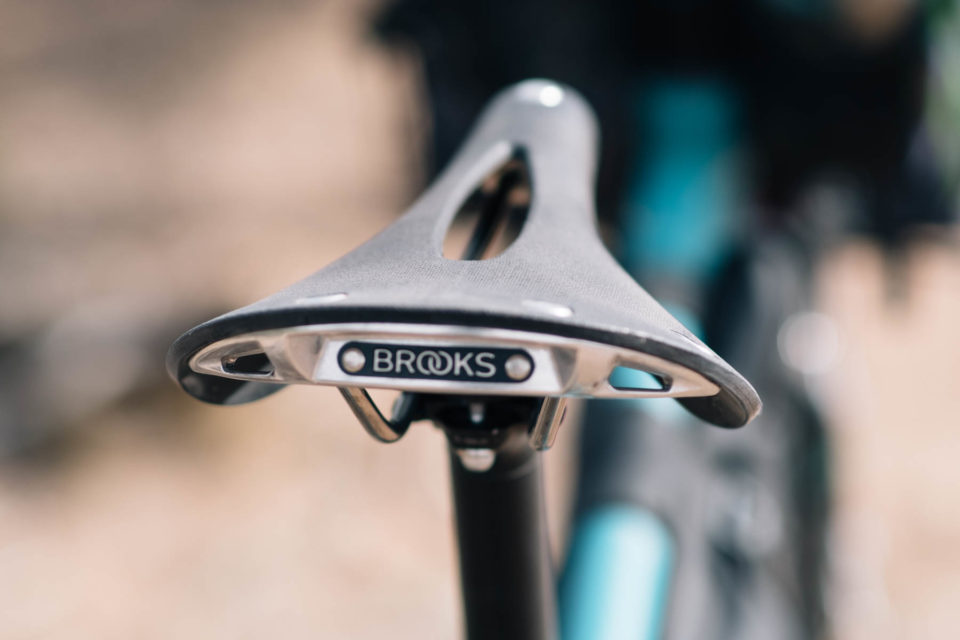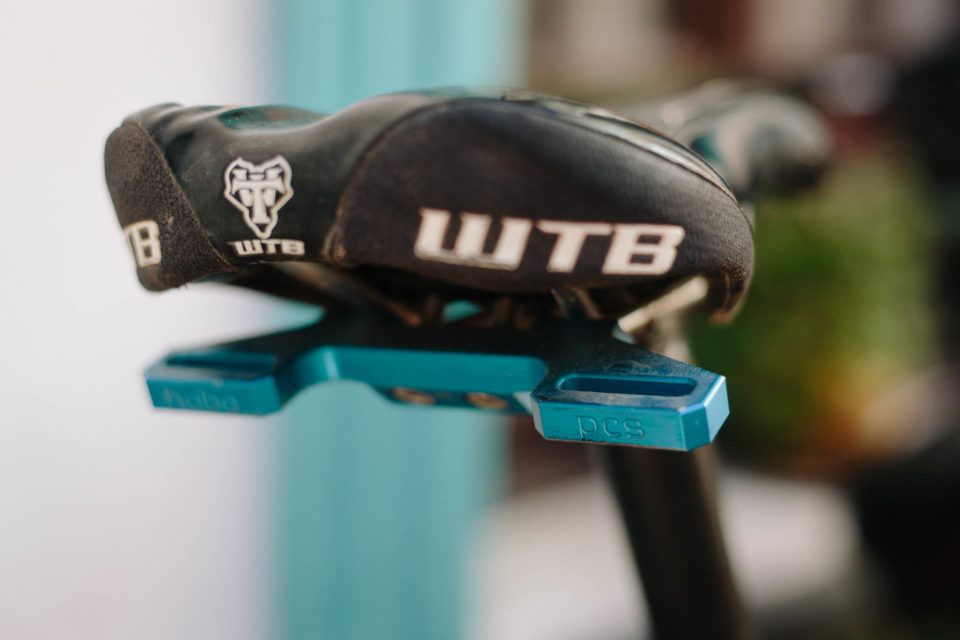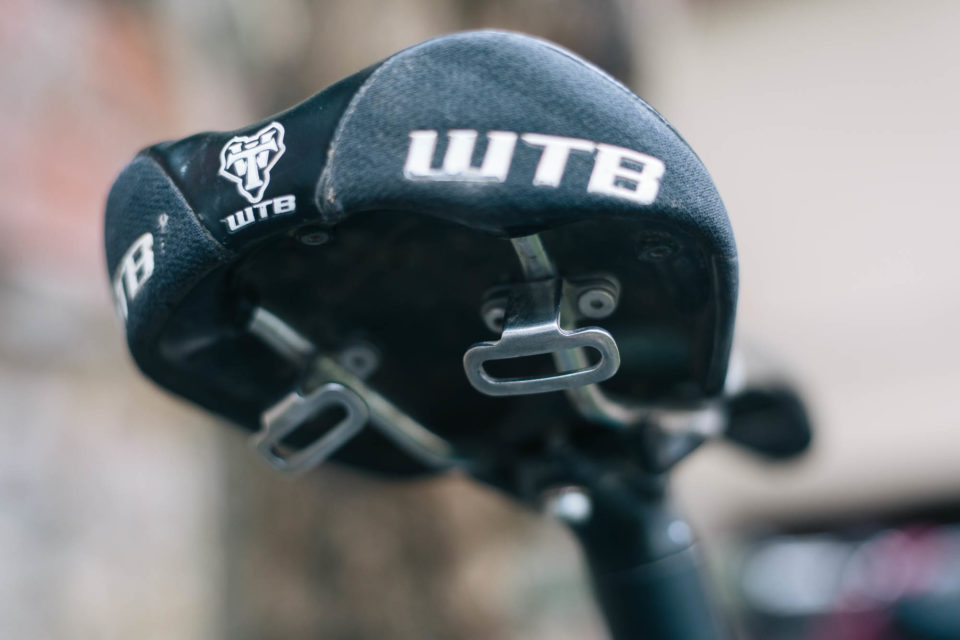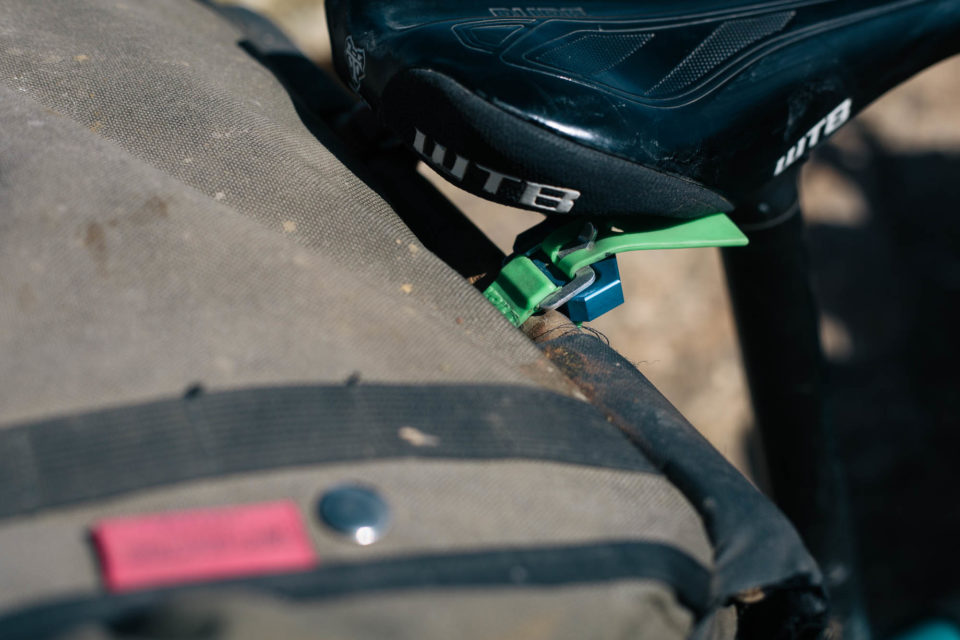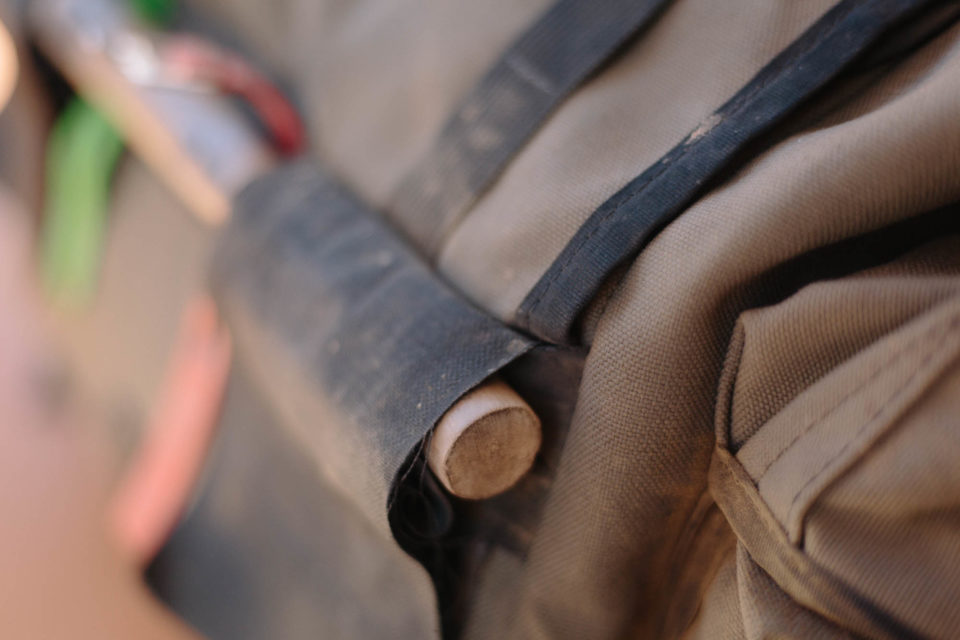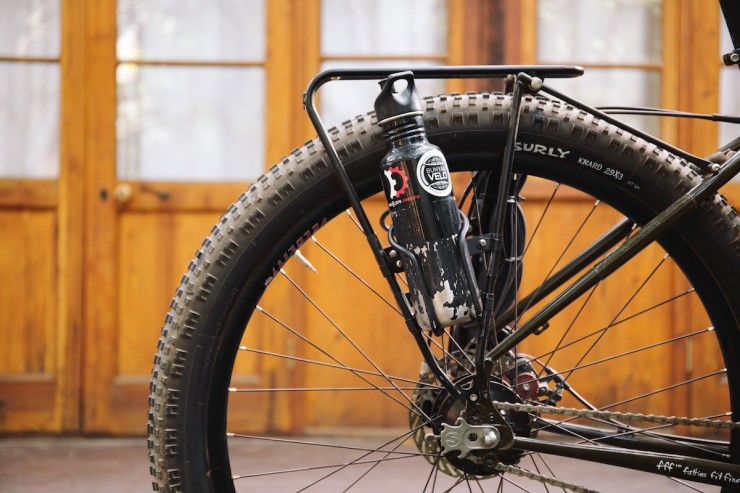Saddlebags for Bikepacking and Front Rolltop Bags
Share This
Long before the advent of modern bikepacking seatpacks, there were saddlebags. This style of luggage continues to hold favour amongst many dirt road and gravel tourers, largely because of its top-loading practicality. In this edition of The Low Down, we take a look at what kind of saddlebags are on the market, discuss their pros and cons, and suggest accessories to help run them securely. Given that they’re also loaded from the top, we’ve included a number of front rolltop bags, too.
The Low Down is a resource series that collates the key options available for each topic discussed; be it handlebars, bags, or tents. Our aim is to create a valuable resource for the bikepacking community, veterans and newcomers alike. Note that some of the gear listed hasn’t been reviewed on this site. Look out for the “T” symbol, denoting items we’ve tested long term and can recommend.
We’re big fans of modern seatpacks. They don’t require any mounting hardware – like a rear rack or support – which keeps them light and allows them to be fitted to almost any bike. Given their limited capacity, they help cap a general tendency amongst most of us to bring too much stuff on our trips. Holster-style designs are quick to access, many seatpacks are waterproof, and nothing beats them for stability when properly packed. Certain models are dropper-friendly, too.
This said, we think there’s still a place for traditional-styled saddlebags, particularly if your adventures involve dirt road explorations rather than technical singletrack. Or, perhaps you’re navigating a route that’s not mined with multiple hike-a-bikes; saddlebags are wide and they make pushing a bike somewhat awkward. Unlike their cylindrical counterparts, they offer very easy mid-ride access to all your belongings. Given their general proportions, saddlebags are also very easy to pack, especially compared to modern bikepacking gear that often demands strategic loading to get the very best out of it. And if you’re riding with photography gear, saddlebags mounted to the handlebars can be a good option, too. Resting a DLSR or mirrorless camera on a sleeping bag or clothes provides protection from the roughest of descents.
In terms of detailing, many saddlebags feature useful and surprisingly capacious side pockets, some of which can be cinched in when not needed; these are great for snacks, gloves, sunglasses, and other lightweight items. Most saddlebags have ‘dowels’ to help provide structure. These struts can be made from wood, metal, or even carbon fiber. Daisy chains and D-rings allow additional gear to be lashed on – like a closed foam roll mat or a waterproof jacket – as well as providing attachments points for a rear LED.
In addition to saddlebags, we’ve included a couple of front-mounted rolltop bags to the mix as well. Like traditional saddlebags, they’re also accessed from the top rather than the sides or back (as with modern seatbacks and handlebar bags). Similarly, this can make day-to-day packing and living on the bike less of a Tetris-like challenge.
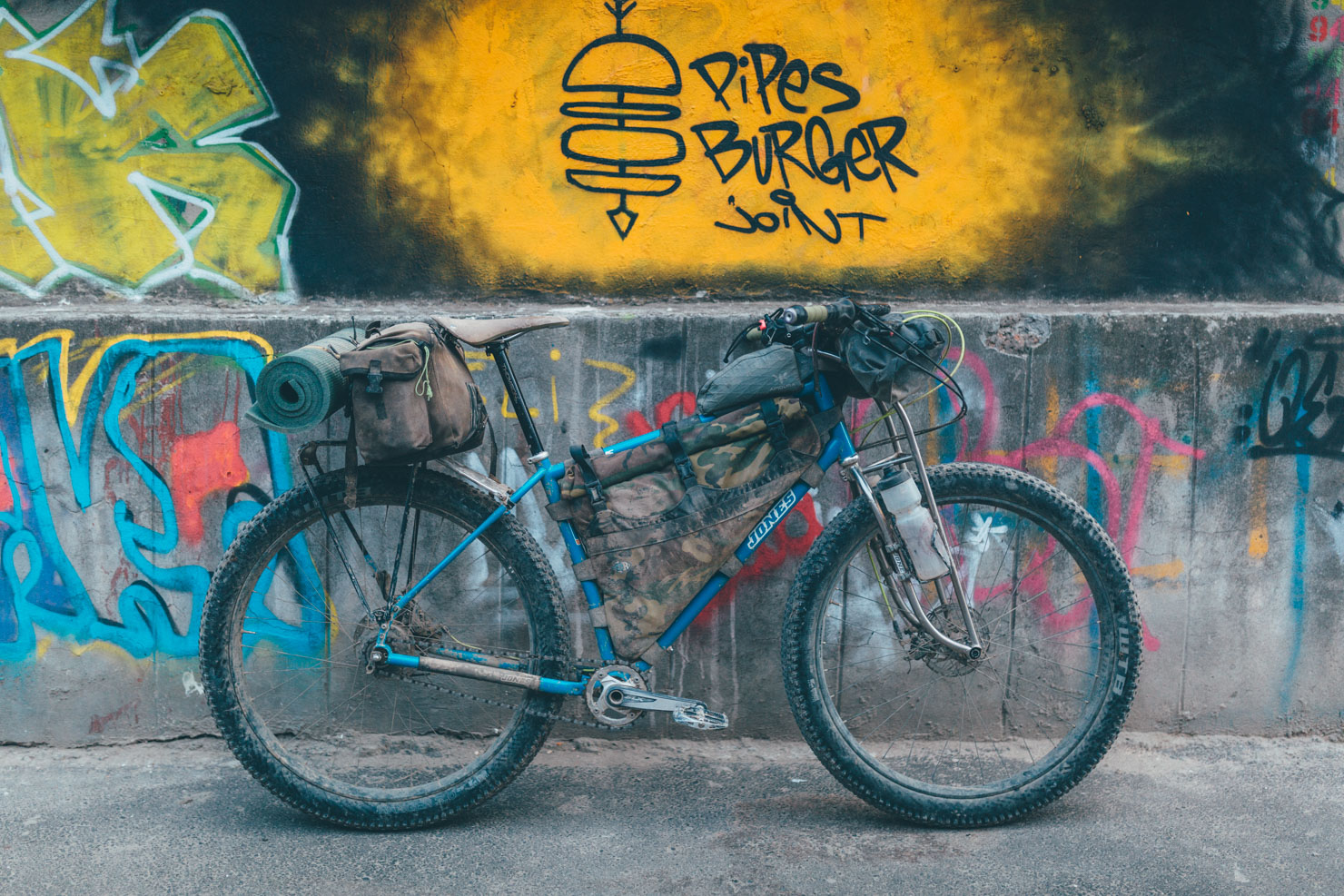
Pros
- Super easy to access thanks to practical boxy shape and top loading design
- Generally straighftforward to repair, depending on materials
- Potentially massive capacity that’s well suited to longer trips and makes wearing a backpack unecessary
- Pefectly stable enough for dirt road touring
- When mounted to the handlebars, this format is a good option for carrying large cameras
- Potentially as capacious as panniers but less wide and clattery on rough roads
- More adaptable; internal structure and dowel means you can pack pretty much whatever you want, however you want it
- Doubles up well for daily commutes and grocery shopping, unlike modern bikepacking gear which is far more specialist
Cons
- Heavier than their seatpack counterparts, for the most part
- When positioned behind the saddle, saddlebags generally require a rack or support to avoid thigh rub, adding hardware and weight to your setup (and ruling out full suspension bikes)
- Unsuited to tents with long poles compared to handlebar-mounted cradles/roll bags
- Most designs aren’t completely waterproof (though a ultralight dry bag takes care of this)
- Not hike-a-bike friendly; being wider than a modern seatpack, saddlebags are less suited to pushing a bike
- Often fiddly to remove and install compared to many seatbags, especially the holster style
- Can feel imbalanced at the back when riding rough roads or trails if not tightly lashed down
Carradice Camper Longflap
Carradice saddlebags are the most recognised of the traditionally styled saddlebags on the market. There’s a reason the design has changed little over the years; the build is tough and the price is hard to beat. There are a number of models in the range. The Camper Longflap is a classic, featuring a nifty flap that unclips to expand the capacity of the bag. Although designed to run behind the saddle, there are plenty of dirt road tourers who choose to run them off the handlebars. The bag lacks webbing on the underside to help stabilise it over rough terrain, but given that it’s made from simple Cotton Duck (95 per cent waterproof, in our experience), it’s relatively easy to modify and repair. We also like the plastic-buckled Super C model (£85, 23L), as it offers quicker access than the leather straps on the Camper, even if the aesthetics of the latter are a little nicer.
- Volume 24 Liters
- Weight 983 grams
- Dimensions (Width x Height x Depth) 36cm (48cm including pockets) x 28cm x 23cm
- Clearance required (saddle rails to tire) TBD
- Straps Leather
- Material Cotton Duck
- Colors Black, Green
- Place of Manufacture United Kingdom
- Price £85.00
- Contact Carradice
Swift Zeitgeist (Hinterland)
The Zeitgeist Saddle Bag is Swift Industries’ take on the classic British touring saddlebag. Made from X-Pac VX21, it weighs in at a bantam-like 340g (12oz), considerably lighter than the company’s heavier duty Zeitgeist Saddle Bags, and much more svelte than a Carradice (though it has a lot less capacity). Swift recommend a support, like the Bagman (also sold by the company), because the double-ply X-Pac gives the body of this bag less structure than their vinyl-lined bags. One for the classically style minimal bikepackers, perhaps. Read Spencer J Harding’s full review and have a look here for the various sizes and colors of other Swift saddlebag models.
- Volume 11 Liters
- Weight 447 grams
- Dimensions (Width x Height x Depth) 16in x 8in x 6.5in (40.6cm x 20.3cm x 16.5cm)
- Clearance required (saddle rails to tire) 8in (20cm)
- Straps Leather
- Material X-Pac
- Colors Cascade, Carbon, and custom color picker
- Place of Manufacture Washington, USA
- Price $199
- Contact Swift Industries
Fabio’s Chest (Swift x Ultra Romance Collaboration)
Designed by roving saddlebag aficionado Benedict Wheeler – aka Ultra Romance – and made in-house by Swift Industries, Fabio’s Chest represents a contemporary take on a more traditionally styled saddlebag that’s packed with clever features. The design features both an internal roll (that can also be folded away inside the bag, almost like a basket) as well as a more traditional double clip closure. The buckles are adjustable in position, too. The bag is designed to be run off the handlebars (with two big velcro tabs for easy removal) or behind the saddle; there’s webbing on the underside through which to run a couple of Voile straps and keep it super stable. Fabio’s Chest includes a really nice ‘Longflap’ style expansion system with a second set of buckles; this increases an already voluminous 27.887 liter capacity (as quoted by the manufacturer) to a remarkably barrel-chested 44 liters, in keeping with its namesake. The result is an extremely versatile setup; if your gear needs concertina with extra food or warm layers, Fabio’s Chest has you covered! Bear in mind that this is a wide bag. Cleverly, though, the pockets can be cinched down, which is especially useful if you’re running it behind the saddle and have to resort to pushing or hike-a-biking. Build quality is excellent, as you’d hope/expect given the price. Given that it has the largest capacity, Fabio’s Chest is the heaviest saddlebag in our roundup, though note that there is a smaller version available for those running narrower handlebars.
- Volume 27.887 – 44 Liters
- Weight 1200 grams
- Dimensions (Width x Height x Depth) 18in x 20in x 8in (46cm x 51cm x 20cm)
- Clearance required (saddle rails to tire) TBD
- Straps Velcro straps and ‘Velclosure’
- Material Cordura 1000D or 10x X-Pac coated cotton
- Colors Greeny grey
- Place of Manufacture Washington, USA
- Price $265
- Contact Ultra Romance
Ellum Ursa Major
We haven’t had a chance to try the Ursa Major or seen one in use, but it looks to be very nicely crafted. According to online specs, it’s a 14L saddlebag made from coated, water-resistant nylon. “There are also additional lashing points located on the bag flap with included D-rings on the daisy chains so you can tie down extra gear, or clip on any Ti mugs. The flap can be expanded outwards to tuck in soft goods like a cozy flannel shirt, or make room for the telescoping neck of the saddle bag. The Ursa Major Saddle Bag connects via three webbing straps, two attach to your saddle loops/tabs, and one connects to your seat post/rack/bag support system on the extra long daisy chain. We provide three Mil-spec nylon webbing straps, as well as a sustainable hardwood dowel to provide rigidity, and stabilize the saddle bag.” Features include HiViz reflective piping accents, two light loops, a sustainable hardwood dowel, and six D-rings for lashing points and use of shoulder strap. The Ursa Major is definitely more of a classically styled saddlebag that’s likely to work best for gravel and forest roads. There’s a collaborative version with Hobo Pieces, too.
- Volume 12-14L(with pockets)
- Weight 850g grams
- Dimensions (Width x Height x Depth) 13.5in x 8in x 7in (34cm x 20cm x 18cm)
- Clearance required (saddle rails to tire) 8in (20cm) without a support
- Straps 3x Mil-spec Nylon
- Material Material 1000D and 500D Cordura
- Colors Various
- Place of Manufacture Texas, USA
- Price $169.99
- Contact Ellum Bag Works
Makeshifter Outback
Makeshifter is a small-scale maker from Portland, Oregon. Each bag is made to order. We haven’t had a chance to try the Outback, but we’ve used other Makeshifter products and are impressed. Originally made for (and named after) the Oregon Outback ride – a dusty, self-supported gravel route that traverses over 350 miles of Eastern Oregon – Makeshifter says this a “classic saddlebag design built for touring, bike camping, and grocery-getting.” Features include super durable and waterproof heavyweight waxed canvas, ‘wings’ on front flap deflect rainwater, multiple D-rings for lashing extra gear to the bag’s exterior, a drawstring closure to keep gear inside (and dust and dirt out). We should note that the beautiful front flap, made of natural canvas & felted wool in a typical Makeshifter design, really sets this bag apart visually. Thanks to Kyle Heddy / Treading Light Photo for use of imagery.
- Volume 12L
- Weight 795 grams
- Dimensions (Width x Height x Depth) 13in x 7in x 7in (33cm x 18cm x 18cm)
- Clearance required (saddle rails to tire) 9in (23cm)
- Straps Leather
- Material 18oz Martexin Original waxed canvas
- Colors Tan with two wool pattern options
- Place of Manufacture Oregon, USA
- Price $265
- Contact Makeshifter Canvas Works
Roadrunner Bags Jumbo Jammer
The Jumbo Jammer steers away from the conventional aesthetic and closure system of saddlebags. Instead of a lid, it relies on a rolltop, cinched down securely in place via webbing that loops up over the handlebars and down through two side D-rings. This creates a four-point mounting system that’s works really well and is extremely secure; the Jumbo Jammer shrugs off even the most intense trail use. The bag is also very stoutly made, proving itself largely impervious to wear and tear, as well as being impressively water resistant, thanks to an integrated liner. There’s a light loop and a 3M reflective strip, too. Maxing out at 29L, capacity is very generous, though we found it needs to be cinched in tightly if you still want to be able to see your front wheel over your handlebars. Roadrunner offer additional hardware to attach to two D-Rings at the front of the bag, which pulls it in closer to the bars (as pictured). Need even more room? There are two big velcro front pockets, perfect for gloves and sunglasses. Complete with an internal metal dowel, the bag is designed to be run both in the front and rear of a bike, though it’s at its best up front if your bikepacking adventures tend to get rowdy.
- Volume 29L
- Weight 910 grams
- Dimensions (Width x Height x Depth) 18-21in x 14in x 6in (46-53cm x 36cm x 15cm)
- Clearance required (saddle rails to tire) 10in (Xcm)
- Straps Nylon webbing and plastic buckles
- Material 1000D Cordura, lined throughout
- Colors Wide assorted of colors and prints
- Place of Manufacture California, USA
- Price $200
- Contact Roadrunner Bags
Tribulus Endover
Unlike other similarly sized bags in this roundup, which tend to be on the heavy side, the Endover is a rolltop handlebar bag that’s as light as a modern, side-access rollbag, albeit with the convenience of a top loading system. Maker Nathan Meyerson comes to bikepacking from an ultralight hiking background, bringing with him ideas that borrow from his backpack designs, with a particularly keen eye on striking a balance between weight and durability. Intended to be both versatile and functionally robust, the bag is suited to both techy singletrack and rough dirt roads, thanks to a number of mounting points across both the fork legs and two strips of daisy chains. These allow for different closure configurations, once the bag is rolled down, including a quick access slider buckle or two locking ones, depending on your preference. There’s a removable ultralight carbon dowel, and on this version, an inside sleeve with a closed foam mat that gives the bag shape, whatever you choose to pack within it… be it pots, pans, a sleeping bag, or a camera. When riding gets especially rough, two bonus side straps can be cinched down to clamp the bag even more tightly to the bars. Compressible side pouches provide extra space for the likes of snacks, or, given that it’s made in New Mexico, perhaps a couple of avocados. Depending on the material chosen, the bags can be seam sealed for almost complete water resistance. Despite its low weight, build quality has proved up to the rigors of long tours, too.
- Volume 22 Liters+
- Weight 445 grams
- Dimensions (Width x Height x Depth) 13in x 22in x 16in (33cm x 22cm x 40cm)
- Clearance required (saddle rails to tire) 11in (28cm)
- Straps Nylon with ITW Nexus Hardware
- Material Dimension Polyant X-Pac (X51, VX21, LS21, X21, X42, V21)
- Colors Purple, Teal, Black, Dark Green, Coyote Tan
- Place of Manufacture New Mexico, USA
- Price $185
- Contact Tribulus Limited
Wizard Works Shazam Saddlebag
Words and photos by Pat Valade
Wizard Works is a fairly new UK based bag maker. Harry Major and his Partner V-Lowe, have established themselves in London after years of working and riding on the road. One of the premier bags in the lineup, the Shazam joins the ranks in the bikepacking bag community as a strong example of a mid sized, expandable roll-top saddlebag. Built for both jaunts around town and for cross-coutnry missions, the Shazam features 12L of roll-top expansion, as well as expandable side pockets. Build quality is top notch, using a hard-shell construction (no sagging!) and Voile strap attachments, this is a companion for the long-haul. It is designed to be used as a saddle-bag with a support, but Pat has used it on handlebars with equal success. Note that in order to use a saddlebag, it requires a saddle with loops, like Brooks. Otherwise, an aftermarket adapter from Hobopieces or Carradice will need to be purchased.
- Volume 10.8L – 22.5L
- Weight 840 grams
- Dimensions (Width x Height x Depth) 12in x 7in x 9-18in (31cm x 17cm x 24-46cm)
- Clearance required (saddle rails to tire) 10in (25cm)
- Straps Voile Nano straps and Nylon straps
- Material 1000d Cordura outer with Bright Yellow Nylon Liner
- Colors Custom Colours and pre-made available
- Place of Manufacture London, UK
- Price $234
- Contact Wizard Works
DIY Saddlebag
If you like working with your hands and have access to a good sewing machine, making your own bikepacking bags can be quite rewarding. While the classic saddlebag may not be the easiest piece of luggage to make from scratch, it’s certainly not the most difficult. Typically, some heavyweight cotton duck cloth, webbing, grosgrain, a few buckles, and a dowel rod are all you need. However, saddlebag fabric can range from timeless waxed canvas, to more modern and rugged Cordura, to lightweight X-Pac. Most materials you will need can be found at craft stores, or fabric suppliers such as Rockywoods.com. Find a full article on Logan’s DIY longflap saddlebag, with plenty of photos, here.
Attaching Saddlebags to the Handlebars
Although traditionally run behind the saddle (hence the name), saddlebags are increasingly being designed to be front and rear interchangeable. When used on the handlebars, different bags use different mounting systems, whether they’re leather straps and metal buckles (for that classic look), velcro straps that can be cinched in super tight, or nylon webbing and buckles, offering good long-term durability. More recently, riders have been experimenting with Voilé straps too, with additional holes punched in to provide a tighter to fit around the handlebars or dowel. We’re big fans of Voilé-style straps as the hard-wearing rubber has a little give, allowing them to be cinched in very tightly. The straps are grippy, helping hold everything in place. Although we haven’t tried them, the SuperStraps look good too, as they already feature holes that run closer to the buckle.
In our experience, saddlebag designs that feature mounting points on the underside of the bag work best for rough dirt road touring; a well-placed strap or two will prevent the bag from bouncing up and down or side to side and destabilise the bike. Be sure to check up every once in a while to make sure there are no stress points. This kind of secondary attachment system is less important for gravel road bikepacking, where a single attachment behind the saddle is usually just fine.
Options abound as to exactly how you’ll want to set your bag up, depending on criteria like trail conditions and the physical distance from your tire to your handlebars (minimum distances required are listed for each bag above). Saving considerable weight and opening them up to different kinds of bikes, some bags are now designed to be set up without the need of a front rack support, such as the Fabio’s Chest, the Roadrunner, and the Tribulus.
However, if you prefer the idea of an extra support, we can recommend the excellent Rivendell/Nitto Mark’s Rack, a minimal rack that’s surprisingly stout, despite its officially limited weight limit. Other options we’ve tried include the Rawland Rando Rack ($70). We’ve spotted some nice custom options from Arizona-based Jonathan Zuchi and Surly’s 8-Pack Rack ($99) is a recommended option too, though given the weight of the rack itself, it’s probably more than you need.
Saddle Attachment systems
Many riders will likely choose to run saddlebags behind the saddle, which offers the most capacity, given that the lids can be expanded upwards, or D-rings loaded with extra gear when it’s needed.
The classic option is to use a saddlebag in conjunction with a saddle that features integrated loops, like the classic Brooks B17 or one of the models in the Brooks Cambium range. For those who already have their prefered perch, there are various attachment systems available that allow saddlebags to work with modern, ‘plastic’ saddles bereft of saddlebag loops. The Restuvus from Hobo Pieces ($55, various colors) is a great looking option; it’s really solidly made and helps keeps the bag extra secure. Velo Orange’s Saddle Loops ($15) are a more affordable alternative. They work surprisingly well for off-road use despite their lightweight build, though they’re somewhat fiddly to install and run straps through.
Alternatively, there’s a spring-loaded quick release system from Carradice, under the Bagman brand (£27). Although this offers welcome convenience, in our experience it isn’t designed for extended off-road use, as the retention pins have a tendency to fall out over rough terrain (place some duct tape over the ends to be sure you don’t loose the sliders as a result). Carradice also has their own simple saddlebag loops (£10).
Minimal Rear Racks and Saddlebag Supports
Whilst some riders are happy running their saddlebags without a rear support, we find the bags tend to rub too much against the thighs for this to be a recommended solution. To support your rear saddlebag and distance it from the seatpost, there are two kinds of options to choose from; either a saddlebag support that hangs off the saddle rails, or a rear rack, assuming your frame has provision for one. The former is lighter and suited to gravel roads, while the latter is preferred for heavier loads and rougher conditions.
As such, most of Carradice’s saddlebag supports work best for light, forest road touring, like the QR Support Expedition, which is rated to 10kg (though we’d recommend less for off-road use). The Bagman 2 Expedition is the most resilient model that we’ve tried for dirt road use, though it appears to be out of production at present. Ocean Air Cycles’ Arlene ($150), which slots in alongside the saddle rails rather than being bolted on, is currently being modified but looks like an interesting option too. Again, it’s more suited to a gravel road bikepacking, though keep the weight under 4.5kg (10 pounds) and it’s recommended for mountain biking. The Swift Industries Tailfeather support ($88) is another option. In a twist on a take, Carradice’s SQR system also serves to move the bag away from the thighs, leaving behind a small plastic mounting fixture when unclipped. We’ve found it more suited to forest roads and gravel riding than trails.
For dedicated off-road use, a lightweight, minimal rear rack is a great way of supporting a saddlebag, especially if you intend to really load it up on a long trip. There’s no need to choose a rack that’s especially heavy duty. Depending on the bag and rack combination, experimentation is generally required for the right setup, especially when it comes to the height between your saddle and the rack platform. Take note of the minimum clearances required, as listed above;
Tubus’ minimal Vega rear rack is amongst our favourites; it fits 3in tires but only just. See here for Logan’s hack on adding water bottle cages to this model. Otherwise, Rat King’s T-rack ($165) is an excellent and extremely lightweight option for supporting a saddlebag, offering ample room for 3in tires, too. Different fork legs are available depending on eyelet placement on your frame, and they have provisions for a couple of water bottles or Anything/Manything Cages, a great way of making extra use of the rack hardware without adding significantly to its weight.
Wrap Up
So, saddlebags or seatpacks? Which is best for you? We’re big fans of the new wave of bikepacking gear; it’s increasingly refined and there’s certainly nothing to match it when it comes to saving weight. This said, the modern bikepacking setup also requires a very specific and practised packing style to work at its best.
Traditional-style saddlebags definitely don’t offer the same ‘performance’ benefits. Inevitably, they’re heavier (especially if a rack is involved) and they’re more unwieldy on singletrack. But in the saddlebags’ favor is that they’re a whole lot easier to access and use, whilst also suiting a more varied payload.
In conclusion, if you need weight savings and ultimate stability – think challenging bikepacking routes like the Colorado Trail – seatbags and rollbags remain our go-to choice. If you don’t – think gravel and dirt road forays like the Oregon Outback – saddlebags may well be a more practical solution for your bicycle travels.
But if you’re not counting every last gram, why not mix and match and create a system that works for you? For some, mounting a top-loading bag off the handlebars (whether it has a lid or a rolltop) with a lightweight seatpack behind the seat may well prove to offer the best of both worlds.
Please keep the conversation civil, constructive, and inclusive, or your comment will be removed.













